
The Knowledge: How to Rebuild Our World From Scratch
by
Lewis Dartnell
Published 15 Apr 2014
A horizontal serrated blade mechanically replicates the action of the hand sickle, sawing side to side to cut the stalks as they are dragged over the front of the machine by a large cylinder of rotating paddle arms. The basic design hasn’t changed in almost two centuries, and the first horse-drawn mechanical reapers look surprisingly similar to their modern descendents. The combine harvester is undoubtedly one of the most important inventions of recent history, freeing so many of us from being required to work in the fields and enabling us to perform other roles in a complex society. RUDIMENTARY MECHANICAL REAPER WITH SWEEPING ARMS (A) AND LOW, SICKLE-LIKE SERRATED BLADE (B). NORFOLK FOUR-COURSE ROTATION As long as you can grow grain for yourself, along with some other fruits and vegetables for the sake of nutritional balance and a more interesting diet, you’ll never starve to death.
…
Free Public Library © Camilo José Vergara 1997. 2: Hydroelectric generators in Goražde, photographer © Nigel Chandler/Sygma/Corbis. 3: Svalbard Global Seed Vault: photograph © Paul Nicklen/National Geographic Society/Corbis; map design by Darren Bennett, dkb creative. 4: Simple farming tools, illustration by Bill Donohoe. 5: Complex farming tools: plough from Lexikon der gesamten Technik by Otto Lueger; harrow, seed drill, and plough action from Meyers Konversationslexikon (1905–1909) by Joseph Meyer. All reproduced courtesy of www.zeno.org. 6: Cereal crops from Meyers Konversationslexikon (1905–1909) by Joseph Meyer, reproduced courtesy of www.zeno.org; page design by Bill Donohoe. 7: Mechanical reaper from Meyers Konversationslexikon (1905–1909) by Joseph Meyer, reproduced courtesy of www.zeno.org. 8: Spinning wheel from The Wonderful Story of Britain: The New Spinning Machine by Peter Jackson (1922–2003) / Private Collection / © Look and Learn / The Bridgeman Art Library. 9: Loom © Science Museum / Science & Society Picture Library.
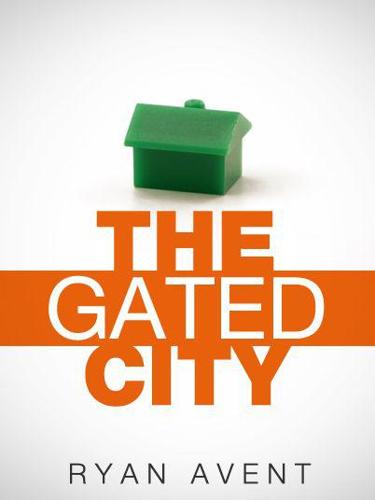
The Gated City (Kindle Single)
by
Ryan Avent
Published 30 Aug 2011
Economist Edward Glaeser describes Detroit in the early 20th century as a place where seemingly every block had its own would-be carmaker, tinkering with designs and production processes in constant competition with and awareness of rivals. Even when ideas are formed in isolation, their full development and exploitation requires the assistance provided by urban networks. The McCormick family developed a mechanical reaper in the quiet of agricultural Virginia. But to manufacture and distribute the machines, Cyrus McCormick took the family business to Chicago, to have better access to markets and skilled labor. Cities aggregate these interactions -- between one thinker and another, between inventor and investor, or between seller and buyer -- and therefore help societies build upon themselves.
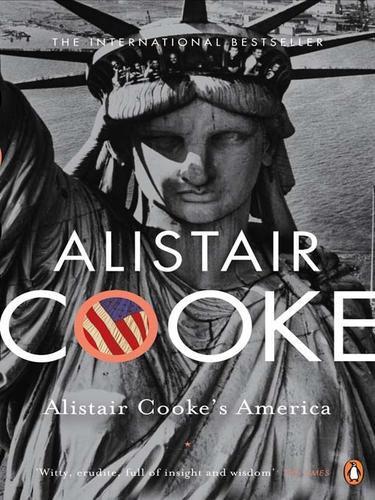
Alistair Cooke's America
by
Alistair Cooke
Published 1 Oct 2008
Ogden invited to Chicago a young Virginian, Cyrus McCormick, to mass-produce the mechanical reaper he had been demonstrating in the East. Before McCormick they cut wheat by hand with a scythe and cradle. His machine did the work of five men, with obviously less fatigue. And so, suddenly, Pennsylvania and Ohio were no longer the big wheat states. The breadbasket moved a thousand miles west – and it was a lucky thing, because the population of the United States went in forty years from thirteen million to sixty million, and Mr McCormick’s mechanical reaper guaranteed that they would be fed. After the reaper, there came in tumbling succession the automatic wire-binder, and the twin binder, the threshing machine, the combine, mechanical corn planters and corn cutters, huskers, shellers, the cream separator, the potato planter, the hay drier.
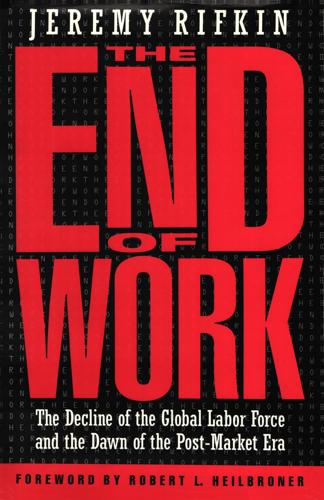
The End of Work
by
Jeremy Rifkin
Published 28 Dec 1994
The lighter plows allowed farmers to shift from oxen to horses, quickening the speed of plowing fields and reducing the labor time in preparing the soil for seeding. 9 While the new iron-steel plows quickened the spring seeding, the introduction of mechanical reapers, at about the same time, greatly increased the speed of harvesting. As late as the 1840S, farmers were still using hand tools to cut the fall harvest. The horse-drawn mechanical reaper cut the work time required to harvest grain by more than half. Cyrus McCormick's reaper gained widespread acceptance in the 1850S and became synonymous with farm equipment over the remain- No More Farmers ill ing decades of the nineteenth century.

Capitalism in America: A History
by
Adrian Wooldridge
and
Alan Greenspan
Published 15 Oct 2018
In 1843, Morse persuaded Congress to give him thirty thousand dollars to build a demonstration line from Baltimore to Washington using the new technology. On May 24, 1844, he sent his first message, “What hath God wrought.” Cyrus McCormick and John Deere were both agricultural workers who tinkered on the side. In 1833–34, McCormick invented a mechanical reaper that could harvest more grain than five men working with hand scythes. In 1837, Deere invented a plow with a polished steel moldboard that successfully “scoured” itself as it pushed through the soil. A few years later, the addition of a seat on top of the plow allowed the farmer to ride along rather than walking behind, a veritable Prince of the Prairie.
…
Eli Terry mass-produced inexpensive clocks and made it possible for a busy country to tell the time.12 As they spread to the Midwest in search of land, the Yankees revolutionized agriculture as well as industry. For millennia, farmers had broken their backs harvesting corn with scythes. Thanks to McCormick’s mechanical reaper they could reap ten acres a day while perched on their behinds. The reaper was the tip of an iceberg: the U.S. Patent Office reported 659 agricultural inventions in the 1850s ranging from plows and threshers through speeders and corn huskers to butter churns and beehives.13 Farmers were hungry for knowledge.
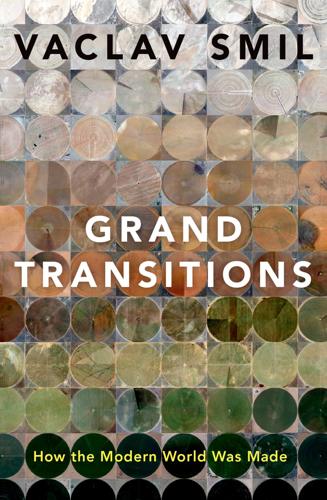
Grand Transitions: How the Modern World Was Made
by
Vaclav Smil
Published 2 Mar 2021
The opening of America’s Great Plains and Canada’s prairies for large-scale cropping would not have been possible without steel riding plows and, later, without large gang plows whose six to ten shares could cut heavy sod and required up to 12 horses to pull. Until the 1830s, when the first mechanical reapers became available in the United States, traditional grain harvesting was done by sickles and scythes (Casson 2017). The first harvester came in the late 1850s, the first fully mechanized grain harvester, able to discharge bound sheaves, two decades later. Combines drawn by horses were introduced in California in the 1880s.
…
J., 229–30 Haber, Fritz, 78 Haber-Bosch process of ammonia synthesis, 77, 78, 148–49, 252 Haiti, deforestation, 213 halogen lights, 140 Han dynasty (China), 245 Hangzhou, China, medieval population of, 57 Hanley, Susan, 32–33 happiness, ratings of, 192–93 Harari, Yuval, 256, 257 harvesters (mechanical reapers), 77 Haussmann, Georges-Eugène, 4–5, 66 HDI (Human Development Index), 279 HDTV, 199 health. See diseases; longevity; mortality and mortality rates healthcare electrification of, benefits of, 137 health insurance programs, impact on lifespan, 47 medical imaging, advances in, 198 universal long-term-care insurance systems, 51–52 heart (cardiovascular) diseases, 107–8 heating, 115, 123, 147 heat islands, 68, 217–18 heat-reflecting (reverberating) furnaces, 157 heavy metals, soil contamination by, 110 Heilbroner, Robert L., 251–52, 263 herbivores, cooperative hunting in premodern era, 205 high-fructose (corn) syrup, 95, 96 Holland.

The Great Reset: How the Post-Crash Economy Will Change the Way We Live and Work
by
Richard Florida
Published 22 Apr 2010
The mid–nineteenth century had seen the rise of a powerful new system of production based on interchangeable parts, dubbed the “American system of manufacture.”4 This system was a huge advance over the older system of a craftsman working independently to make parts with a chisel and file, replacing that time-honored practice with machine-made parts. But it advanced only slowly, in fits and starts, and was used mainly at first for military production. Advances made during the First Reset enabled the system to spread from “firearms, then in clocks, pumps. Locks, mechanical reapers, typewriters, sewing machines, and eventually bicycles and engines,” notes the economic historian Joel Mokyr.5 Adding to this were major strides forward in continuous-flow technology, initially pioneered in the huge meat-processing factories of Chicago, where it was initially used to speed up the disassembly of livestock, which paved the way for modern mass production à la Henry Ford.

Who's Your City?: How the Creative Economy Is Making Where to Live the Most Important Decision of Your Life
by
Richard Florida
Published 28 Jun 2009
In fact, the earliest cities, according to Jacobs, formed around rudimentary trade in wild animals and grains, which led their inhabitants to discover agriculture and the economic benefits of product exportation. Even activities typically considered “rural” originated in cities before proliferating into outlying regions. Productivity improvements in agriculture, Jacobs points out, always originated in cities before they were adopted in farming areas. The mechanical reaper, for instance, was originally invented, perfected, and used in cities before the technology reached and revolutionized rural agricultural areas. A dynamic city, according to Jacobs, integrates its hinterland and becomes a full-blown “city-region.” As nearby farmland is revolutionized by city-created technology and innovation, rural dwellers move closer to town to assume jobs in urban industry.

Age of the City: Why Our Future Will Be Won or Lost Together
by
Ian Goldin
and
Tom Lee-Devlin
Published 21 Jun 2023
The influential theologian St Augustine presented the human story as a conflict between the iniquitous ‘City of Man’ and the heavenly ‘City of God’, observing that it was Cain, murderer of his brother Abel, who according to the biblical narrative founded the first human city.9 Later, Jean-Jacques Rousseau would declare cities to be ‘the abyss of the human species’,10 while Thomas Jefferson would dismiss them as ‘pestilential to the morals, the health and the liberties of man’.11 The essayist William Hazlitt feared that the city engendered ‘a puny, sickly, unwholesome, and degenerate race of beings’.12 Nevertheless, cities began to grow rapidly in size following the onset of the industrial revolution in Europe in the eighteenth century. A succession of advances in agriculture, from crop rotation to the mechanical reaper, created a much larger agricultural surplus in the countries where they were adopted. In Britain, the enclosure movement, under which lands that were previously communal and accessible to all were appropriated for private landowners, displaced a sizeable share of the rural population. At the same time, the adoption of new manufacturing technologies, including the spinning-jenny and steam engine, created enormous numbers of jobs in booming urban industries such as textiles and metalworks.

Moral Ambition: Stop Wasting Your Talent and Start Making a Difference
by
Bregman, Rutger
Published 9 Mar 2025
And in the state of Connecticut, until 1965, you could be arrested or jailed for using a condom, even if you were married.37 (In my own country of the Netherlands, things weren’t all that different: there you had the Morality Act, which prohibited the distribution of contraceptives as late as 1970.)38 But McCormick didn’t let that stop her. She smuggled over a thousand diaphragms from Europe through US customs by sewing them into her clothing.39 She believed that women could only be free once they had control over their own bodies. In 1947, McCormick inherited her wealthy husband’s estate (his father had invented the mechanical reaper, a groundbreaking technology for harvesting grain).40 She was now in her seventies, but as idealistic as ever. And she knew exactly what she wanted to do with the money. McCormick wrote a letter to an old friend, the feminist Margaret Sanger, asking whether she knew someone who could develop a safe, reliable, and inexpensive contraceptive for women.

Energy and Civilization: A History
by
Vaclav Smil
Published 11 May 2017
Cutting with sickles was slow, and scythes, equipped with cradles for grain reaping, were preferred for harvesting larger areas (fig. 3.2). But sickle harvesting caused lower grain losses from ear shattering than broad sweeps with scythes, and the practice was retained in Asia for harvesting easily shattered rice. Mechanical reapers came to American and European grain fields only in the early part of the nineteenth century (Aldrich 2002). Harvests were brought home as sheaves carried on heads, in panniers hung on shoulder beams or the sides of animals, and in wheelbarrows, carts, or wagons pushed or pulled by people or draft animals.
…
Current Anthropology 36:199–221. Alberici, S., et al. 2014. Subsidies and Costs of EU Energy. Brussels: EU Commission. https://ec.europa.eu/energy/sites/ener/files/documents/ECOFYS%202014%20Subsidies%20and%20costs%20of%20EU%20energy_11_Nov.pdf. Aldrich, L. J. 2002. Cyrus McCormick and the Mechanical Reaper. Greensboro, NC: Morgan Reynolds. Allan, W. 1965. The African Husbandman. Edinburgh: Oliver & Boyd. Allen, R. 2003. Farm to Factory: A Reinterpretation of the Soviet Industrial Revolution. Princeton, NJ: Princeton University Press. Allen, R. C. 2007. How Prosperous Were the Romans? Evidence from Diocletian’s Price Edict (301 AD).

The Glass Cage: Automation and Us
by
Nicholas Carr
Published 28 Sep 2014
The scythe is still employed in subsistence farming in many parts of the world. But it has no place on the modern farm, the development of which, like the development of the modern factory, office, and home, has required ever more complex and efficient equipment. The threshing machine was invented in the 1780s, the mechanical reaper appeared around 1835, the baler came a few years after that, and the combine harvester began to be produced commercially toward the end of the nineteenth century. The pace of technological advance has only accelerated in the decades since, and today the trend is reaching its logical conclusion with the computerization of agriculture.

Utopia Is Creepy: And Other Provocations
by
Nicholas Carr
Published 5 Sep 2016
The scythe is still employed in subsistence farming in many parts of the world. But it has no place on the modern farm, the development of which, like the development of the modern factory, office, and home, has required ever more complex and efficient equipment. The threshing machine was invented in the 1780s, the mechanical reaper appeared around 1835, the baler came a few years after that, and the combine harvester began to be produced commercially toward the end of the nineteenth century. The pace of technological advance has only accelerated in the decades since, and today the trend is reaching its logical conclusion with the computerization of agriculture.
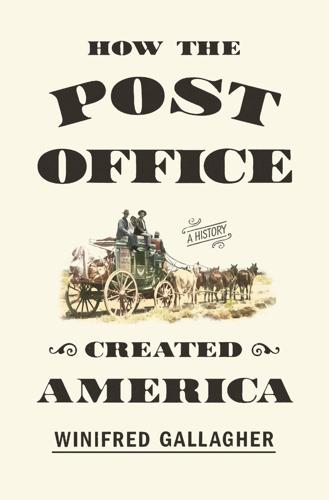
How the Post Office Created America: A History
by
Winifred Gallagher
Published 7 Jan 2016
The ranks of gentlemen had expanded beyond those who inherited the distinction to include, in John Adams’s formulation, anyone who had a liberal education, including him. The literacy rate climbed as high as 90 percent in populous regions, and most citizens were farmers who, unlike their European peers, owned their own land. Pragmatic American geniuses accelerated the Industrial Revolution with the cotton gin (short for “engine”), mechanical reaper, steamboat, and other inventions, which also expanded employment opportunities. Merchants, skilled artisans, and others who both worked and owned property formed the new class of “middlings”—the advance guard for the later nineteenth century’s huge bourgeoisie. The Early Republic’s exuberant optimism and determination to realize the Enlightenment’s philosophical and spiritual principles inspired a great interest in individual rights and efforts to uplift society.

A World Without Work: Technology, Automation, and How We Should Respond
by
Daniel Susskind
Published 14 Jan 2020
Andrew Ure, an influential figure who acted as a sort of early management consultant to manufacturers, called for taking away tasks from “the cunning workman” and replacing him with machines so simple to use that “a child may superintend” instead. (He did not mean this metaphorically: child labor was an acceptable practice back then.)13 And as the economic historian Joel Mokyr notes, this trend was not confined to the world of cotton and cloth: “First in firearms, then in clocks, pumps, locks, mechanical reapers, typewriters, sewing machines, and eventually in engines and bicycles, interchangeable parts technology proved superior and replaced the skilled artisans working with chisel and file.”14 At the turn of the twenty-first century, then, the conventional wisdom among economists was that technological progress was sometimes skill-biased, at other times unskill-biased.
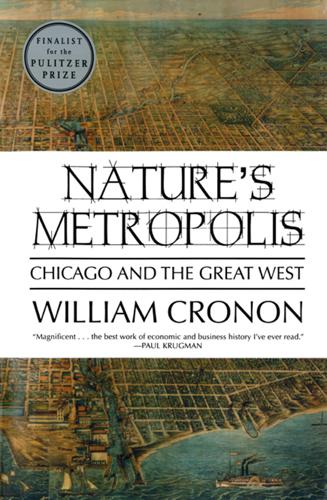
Nature's Metropolis: Chicago and the Great West
by
William Cronon
Published 2 Nov 2009
Timing was everything, causing considerable anxiety to farmers for whom a few days might make the difference between a profitable crop and a failed one. The hazards and hard labor of harvesting wheat were the chief reasons that prairie farmers responded quickly when Cyrus McCormick began to sell mechanical reapers from his Chicago factory in the 1840s and 1850s. Risks such as these kept farmers from depending too heavily on any single grain. Although no farm resembled the original prairie in diversity of plant species, the typical one grew several crops, each in its own monocultural field. Wheat and corn were the most popular, wheat because it served as the classic frontier cash crop, corn because it was prolific and served well as animal feed.
…
Louis bankruptcies, 303 Marinette, Wisconsin, 158, 191, 193, 194–95, 197 markets and marketing: Burrows’s problems in, 318–24 cash, 289 of cattle, 225–26 cattle and local, 245–46 direct-mail 335 of dressed beef, 237–38 European, 62 exchange, 50 flow of merchandise in, 310–11 hierarchy of, 279–80 of hogs, 225–26 of lumber, 169–80, 184–85, 195 of McCormick’s reaper, 313–18 meat trade and, 237 in Mississippi Valley, 311 specialized, 279–80 speculative, 124 telegraph and, 120–23 urban, 266–67 wholesale, 281, 282, 291 year-round, 144 Marquette, Michigan, 312 Martineau, Harriet, 30 Marx, Karl, 92 capital as identified by, 148, 198 Massachusetts, 237, 289 mass production, 229 Mears, Charles, 160–69, 170 background of, 160–61 capital problems of, 168–69 example year of, 161–62 final years of, 184 labor and, 163–67 Mears, Nathan, 160, 168 meat and meat trade, 207–59 American diet and, 212 beef-pork markets comparison and, 225–26 Big Four and, 241, 253 bison and, 213–18 bison-cattle contrast and, 222–23 by-products of, 250–52 cattle and, 218–26, 232–33, 236, 239, 240, 245–46, 247, 256–57 in Chicago, 229–30, 249–50, 257–59 Cincinnati and, 211, 228–30 Civil War and, 210, 230, 296 consumer psychology exploited by, 237 corn and, 222–23 cowboys and, 220–21 cycling of prices in, 246 decay problem of, 225 disassembly line of, 211, 229, 243, 250 dressed beef and, 235–45 feedlot system and, 223 grading system in, 236–37 grazing and, 220–21 hogs and, 207–9, 225–29, 230–32 Hough House and, 211 human psychology and, 256–57 ice trade and, 232–33 inspectors of, 253 Kansas stockyards and, 219–20 land and, 218, 220–21 livestock purchasers and, 237 live vs. dressed shipments and, 240–41 marketing and, 237 meat packers and, 225, 228, 232–38, 240–59 mechanization of, 228–29 in New York City, 243 nonmeat products of, 249 packers-butchers conflict and, 241–44 packers’ oligarchy and, 244, 248, 253 pork packers and, 227–34, 236–37 prairie and, 213–14 railroads and, 209–11, 216–17, 219–20, 222, 224, 227, 230–31, 238–39, 326–42, 345 ranching and, 220–21 refrigerator cars and, 233–34 river transport and, 227–28 standardization in, 237 stockyards and, 207–12 Texas and, 220–21, 223, 224, 232 unified yard in, 210–11 “unnatural” products and, 252–54 Vest Committee and, 246–47 Meat Inspection Act, 253 meat packers, 232–47 achievements of, 254–55 branch houses of, 242–43 butchers’ conflict with, 241–44 by-products exploited by, 250–54 Chicago’s congestion problem and, 375–76 Chicago’s declining importance to, 257–59 decay problem of, 225 fruit trade and, 248 grading system and, 236–37 hogs and, 225 ice trade and, 232–33 inedible materials used by, 252–53 in Kansas City, 257, 296, 309, 375 market dominated by, 244 meat trade and, 225, 228, 232–38, 240–59 mechanization and, 228 New York City as center of, 241 nonmeat products of, 249 oligopoly of, 244, 248, 253 in Omaha, 375 peddler car of, 242 pollution created by, 250–52 pooling mechanisms of, 245 prices and, 235 refrigerator cars and, 233–34 U.S. investigation of, 246–47 Vest Committee and, 246–47 waste materials used by, 255 mechanical reaper, 100 Medill, Joseph, 140, 143 Memoirs of an American Citizen (Herrick), 374–75 Memphis, Tennessee, 105, 382 Menominee, Wisconsin, 158, 191, 193, 194–95, 196, 197 Menominee River, 159, 191 logjam on, 157 Mercantile Agency, 270–71 merchants and merchandising, 314 advertising used by, 328 credit and, 322–23 drummers used by, 329–30 farmers and, 319–20 flow of merchandise and, 310–11 of frontier, 319 frontier economy and, 321–22 geographical reorientation and, 327–28 guarantee of, 336 mail order trade and, 334–40 mail service and, 332–33 market information and, 320, 332 “on approval” sales by, 328–29 postrailroad economy and, 324–33 prerailroad world of, 318–24 railroads and, 324–33 telegraph and, 332 warehousing and, 322, 326 see also wholesale trade metropolises, 279 boosters’ vision of, 34 Butler’s vision of, 34 Chicago as, 92, 268, 283, 377 location of, 39–41 see also cities; urban hierarchy metropolitan thesis, 400 Michigan, 162–63, 184, 263, 271, 274, 308 earliest lumber-milling district in, 158 iron mining in, 312 Lake, see Lake Michigan lumber trade in, 64, 148, 151, 153, 154, 170, 191, 197, 200–203, 205 tourist hinterland of, 382 Michigan Avenue, 337 Michigan Central Railroad, 70, 82, 300 Michigan Lumberman, 193 Michigan Southern Railroad, 70, 76 “Middle West,” 379 milling, multistaged, 376 milltowns, 158, 191–92 Milton, John, 215 Milwaukee, Wisconsin, 33, 45, 61, 62, 104, 130, 151, 160, 163, 308, 381, 382 as Chicago’s competitor, 171 creditor debts in, 284 harbor of, 87 lumber trade in, 171 Milwaukee and St.

Visual Thinking: The Hidden Gifts of People Who Think in Pictures, Patterns, and Abstractions
by
Temple Grandin, Ph.d.
Published 11 Oct 2022
Four examples come to mind that show the impact their inventions had on society. The cotton gin invented by Eli Whitney separated the seeds from the cotton fiber, revolutionizing the textile industry. The reaper invented by Cyrus McCormick used a vibrating blade to harvest grain; a version of this device would be used in all subsequent mechanical reapers, revolutionizing our food supply. Elias Howe didn’t invent the sewing machine, per se, but he put together all the existing elements: the overhanging arm, the lockstitch, an automatic feed for the fabric, and his own ingenious design of a needle with an eye placed at the point of insertion into the fabric.
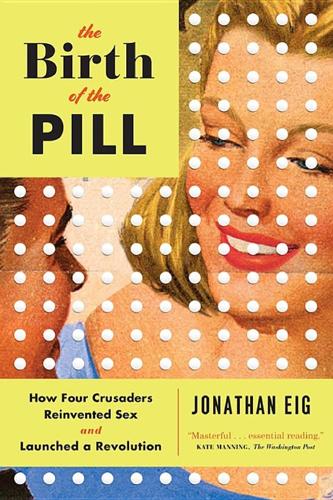
The Birth of the Pill: How Four Crusaders Reinvented Sex and Launched a Revolution
by
Jonathan Eig
Published 12 Oct 2014
At the time of her wedding, Katharine was twenty-nine years old, fierce and lovely, a leader in the women’s movement and one of the first women to graduate with a degree in science from MIT. She had haunting eyes and a voice so soft and sweet it made men overlook, or at least tolerate, the incendiary things she often said. Deferring her plans to attend medical school, she married Stanley—the youngest son of Cyrus McCormick, inventor and manufacturer of the mechanized reaper and one of the wealthiest men in the world. They were the match of the year, the socialite and the millionaire. Stanley struck an ideal figure: tall, broad-shouldered, athletic, and a Princeton graduate. In their wedding photo, he wears a white tie and tails and clutches a top hat in his left hand.
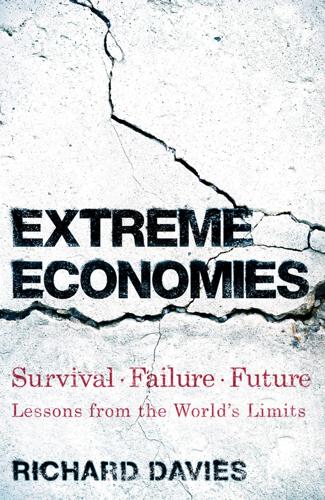
Extreme Economies: Survival, Failure, Future – Lessons From the World’s Limits
by
Richard Davies
Published 4 Sep 2019
And Andrew Meikle’s steam-powered threshing machine, invented in the late 1780s, reduced the time taken to clear an acre to just half a day – a 90 per cent improvement on labourers using sickles. By the early nineteenth century a torrent of agricultural engineering was in full flow, with farmers introducing mechanical reapers, haymakers, turnip cutters, winnowers and chaff machines. As the new technologies spread across the British countryside productivity jumped: by 1850 farms were producing two and a half times more than a century previously. But many farm workers hated the new labour-saving technology and violence erupted in Kent in 1830 as they started destroying threshing machines.

The Rise and Fall of American Growth: The U.S. Standard of Living Since the Civil War (The Princeton Economic History of the Western World)
by
Robert J. Gordon
Published 12 Jan 2016
Cast-iron plows were replaced several decades later by steel plows that reduced the amount of power needed to pull the plow.27 A simple invention to reduce human drudgery was the sulky plow, which allowed the farmer to ride atop it instead of walking behind it; soon plows were developed that could cut multiple rows at the same time.28 Several inventors, including Obed Hussey and Cyrus McCormick, share credit for the 1833–34 invention of the mechanical reaper, which could harvest more grain than could five men working with hand scythes. McCormick’s initial model was a crude device that cut the standing grain and, “with a revolving reel, swept it into a platform from which it was raked off into piles by a man walking alongside. By 1880 the bundles of grain were automatically bound with twine.”29 All these reapers, though increasingly sophisticated, had to be pulled by a team or two or more horses, and improvements were constantly made to make them lighter and less taxing for horses to pull.
…
See men Malthus, Thomas, 31–32 managed care, 490–94, 496–97 managerial/professional employment, 256 manufacturing: American system for, 561–62; assembly line introduced for, 557; decline in, 499, 628–29; globalization and decline in, 633; Index of Industrial Production and Industrial Capacity of, 585–86; occupations in, 249; productivity in, 269–70; wages paid in, 279; work week and hours in, 258 March of Dimes, 467 Marconi, Guglielmo, 21, 191 Margo, Robert, 345, 503, 542, 613 marketing, 597–98 marriage, 630–32, 644 Marshall Field’s (department store), 89, 296–97 Martin, Mary, 417 Mason, John Landis, 5 Mason jar, 5 mass production, 155 Maxwell, James Clark, 191 Maybach, Wilhelm, 150 McAfee, Andrew, 593, 597 McClennan, Mark, 484 McCloskey, Deirdre, 23 McCormick, Cyrus, 28, 263–64, 291, 312, 568 McCullough, J. F., 167 McKinlay, John and Sonja, 213, 215 McNamara, Frank, 450 meat: consumption of, 66, 82, 333–34, 339; production of, 220–22; rationing of, 335 mechanical reaper, 263–64 Mecherle, George, 309 medical care: hospitals for, 226–31; paying for, 234–37; predicting future of, 594; See also health and health care medical professions, 207, 232–33, 244; in 1870, 50–51; after 1940, 476–77; doctors, 224–28; nurses, 230 medical research, 232–33, 480 medical schools, 226–27, 232–33; cost of medical care and, 234 medical technology, 478–82, 594 Medicare and Medicaid, 489–90, 518, 642 medium-sized cities, housing in, 110–12 Meeker, Edward, 215 Memphis (Tennessee), 217 men: elderly, in labor force, 252–53; erectile dysfunction in, 486; housework done by, 277; in labor force, 34, 248, 250; ratio of women to, 630–31; as stay-at-home husbands, 508; tastes in clothing for, 350; teenagers (1870), 58; in working class (1870), 56 mental health, 473 Mercedes (automobiles), 157 Meucci, Antonio, 574 Micro Instrumentation and Telemetry Systems (MITS), 452 Microsoft, 452, 453, 574 microwave ovens, 358, 362 middle class, 498; in 1870, 46–47; in 1950s and 1960s, 503; bungalow movement housing for, 108–10; housing for (late nineteenth century), 107; market-purchased clothing for, 85–86; small-town housing for, 111 Midwestern cities, housing in, 105–7 midwives, 231, 274 migrations: in 1870, 35–36; of blacks, 368; housing for, 100; westward, 54 milk, 81–82, 220, 245 Miller, Grant, 207, 217–18, 244 minimum wage, 616, 644, 645 mining industry, 266–67 Minneapolis (Minnesota), 151 Miron, Jeffrey, 646 Mitchell, Margaret, 202 mobile (cell) phones, 411, 430–32, 577–78; smartphones, 437–38, 581 Model A (Ford automobile), 155–56, 559 Model T (Ford automobile), 153–56, 165, 169, 382, 559 Mokyr, Joel, 31; on access to running water, 216; on forecasting innovation, 590; on germ theory of disease, 219; on household production, 208, 278 Montgomery Ward catalog, 63, 90–91, 294, 332 Moore, Gordon, 444, 458 Moore’s Law, 444–47, 458, 524, 588–89, 593, 636 Morrill Acts (1862; 1890), 311–12 Morse, Samuel F.
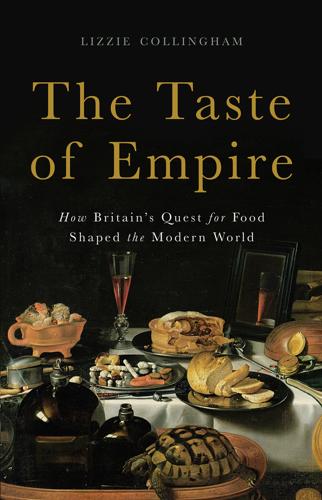
The Taste of Empire: How Britain's Quest for Food Shaped the Modern World
by
Lizzie Collingham
Published 2 Oct 2017
Rather than lose their livelihoods to the Americans, with their limitless access to ‘untaxed and fertile soil’, they went to join them.28 America’s family farms may have been anachronistic in their idealisation of the sturdy yeoman farmer, but they were progressive in their farming technique. The pioneers who ventured onto the prairies of northern Illinois, Wisconsin, Iowa and eastern Minnesota used mechanical reapers, which substantially increased the amount a farmer working on his own could harvest.29 When, in the 1870s, they moved onto the great plains of Kansas, Nebraska and the Dakotas, they added the wire binder to their battery of machines, which doubled their productivity.30 But the mechanical innovation that assured American wheat’s competitiveness was the invention in 1848 of the steam-powered grain elevator.
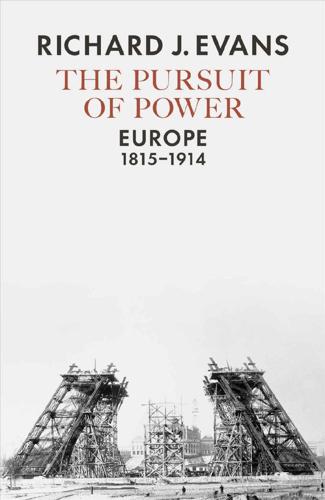
The Pursuit of Power: Europe, 1815-1914
by
Richard J. Evans
Published 31 Aug 2016
Soon he was doing business all over Europe. In Germany from 1882 to 1907 the number of threshing machines increased by 385 per cent, seed drills by 450 per cent, and mechanical reapers by 1,500 per cent. Imports of agricultural machinery into Italy rose more than twentyfold between 1888 and 1910. Landowners in northern France began to import threshing, reaping and binding machines from America in the 1870s: by 1892 there were 262,000 horse hoes, 234,000 threshing machines and 39,000 mechanical reapers in use in France, and the total weight of imports of agricultural machinery increased more than tenfold between 1890 and 1913. Increasingly, too, Continental countries began to manufacture their own farm machines: the value of the output of agricultural machinery factories in Russia rose more than tenfold between 1890 and 1913, a development paralleled in less dramatic form in other areas of commercially farmed large estates.

Army of None: Autonomous Weapons and the Future of War
by
Paul Scharre
Published 23 Apr 2018
At the Battle of the Somme, Britain lost 20,000 men in a single day, mowed down by automatic weapons. Millions died in the trenches of World War I, an entire generation of young men. Machine guns accelerated the process of killing by harnessing industrial age efficiency in the service of war. Men weren’t merely killed by machine guns; they were mowed down, like McCormack’s mechanical reaper cutting down stalks of grain. Machine guns are dumb weapons, however. They still have to be aimed by the user. Once initiated, they can continue firing on their own, but the guns have no ability to sense targets. In the twentieth century, weapons designers would take the next step to add rudimentary sensing technologies into weapons—the initial stages of intelligence.

The Relentless Revolution: A History of Capitalism
by
Joyce Appleby
Published 22 Dec 2009
Just around the next corner in technology’s forward movement was the automobile with prototypes of the modern car being developed in half a dozen countries. The demand for rubber for automobiles promised to integrate the previously neglected equatorial and Middle Eastern areas into the world economy. It was not just rubber that found new uses; oil, nitrates, even cactus leaves acquired commercial value. The mechanical reaper was transforming American agriculture. Its widespread use occasioned another farm mechanism, a knotting device that bound wheat shafts with twine. Landholders in the poor and dry Yucatán Peninsula somehow learned of this and saw the possibility of making twine from cactus. A group of entrepreneurs emerged ready to enslave the peasants, if necessary, to get them to use their machetes to cut off the cactus leaves.
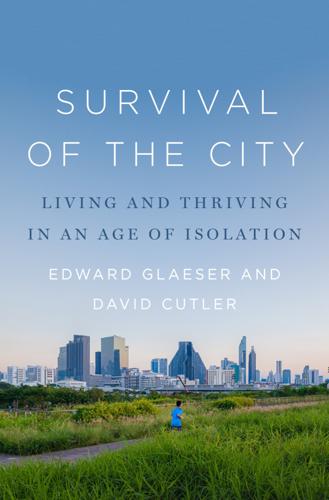
The Survival of the City: Human Flourishing in an Age of Isolation
by
Edward Glaeser
and
David Cutler
Published 14 Sep 2021
In 1800, and even in 1900, Europeans and Americans expended a great deal of calories just doing their work. Farming could be backbreaking, and early industrial labor didn’t mean sitting in a padded chair. Cities played an outsized role in creating the technologies that made work sedentary. In nineteenth-century Chicago, Cyrus McCormick made mechanical reapers that reduced the effort needed to chop down wheat and corn. In Detroit, Ford created an automated assembly line that enabled the parts to move and the workers to stay put. Ford’s cars then reduced the need to walk to train stations or to the grocery store. During the twentieth century, machines replaced even more human energy and so people burned fewer calories.

Power and Progress: Our Thousand-Year Struggle Over Technology and Prosperity
by
Daron Acemoglu
and
Simon Johnson
Published 15 May 2023
Soon the Singer sewing machine company went further, combining interchangeable parts, specialized machinery, and better designs, and was producing more than 500,000 units per year. Woodworking and then bicycles were the next industries to be transformed by the American System of Manufacturing. In 1831 Cyrus McCormick invented a mechanical reaper. In 1848 he moved his production to Chicago, making more than 500 each year to sell to farmers on the prairie. Increasing farmer productivity boosted North American grain production, made food cheaper around the world, and pushed young people to move from rural areas to burgeoning cities. According to the 1914 Census of Manufactures, there were already 409 machine-tool establishments in the United States.

City: Urbanism and Its End
by
Douglas W. Rae
Published 15 Jan 2003
Once cities approach truly urban densities, biological necessity makes them bulk importers of food and drink, to fill people’s stomachs, and of fibers, to cover their backs. Only as the hinterlands generate big surpluses does it become possible to sustain large cities in large numbers—but in late nineteenth-century America just that occurred. As agriculture relentlessly substituted capital— formed up as John Deere’s steel plow, Cyrus McCormick’s mechanical reaper, Haber-Bosch ammonia-based fertilizer—for the sweat of strong backs, more and more goods could be produced by fewer and fewer people. One way to track this trend is by adding up the hours of direct labor required to produce a standardized bushel basket of wheat.14 In 1840, the required labor was roughly 2 11 C R E AT I V E D E S T R U C T I O N hours and 20 minutes (down from 3 hours and 45 minutes a generation earlier).
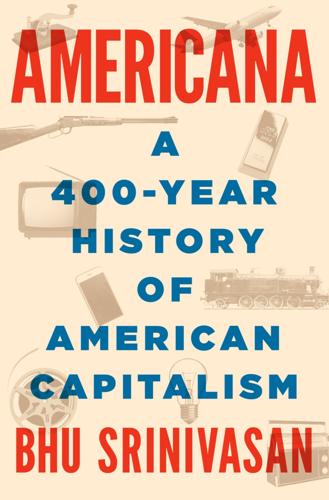
Americana: A 400-Year History of American Capitalism
by
Bhu Srinivasan
Published 25 Sep 2017
In struggle, power respected only power. For years the Anarchists seemed to be more bark than bite. But the risk assessment changed on May 4, 1886, when the bomb exploded. • • • THE FINAL CHAIN of events had started at Chicago’s McCormick Reaper Works earlier in the year. McCormick’s mechanical reaper had once transformed harvesting practices on American farms, lowering the cost of grain for consumers nationwide. By the 1880s the company, now led by Cyrus McCormick Jr., was a large American exporter of farm equipment. A labor union began enlisting segments of McCormick’s employees who were pushing for an eight-hour workday.

Americana
by
Bhu Srinivasan
In struggle, power respected only power. For years the Anarchists seemed to be more bark than bite. But the risk assessment changed on May 4, 1886, when the bomb exploded. • • • THE FINAL CHAIN of events had started at Chicago’s McCormick Reaper Works earlier in the year. McCormick’s mechanical reaper had once transformed harvesting practices on American farms, lowering the cost of grain for consumers nationwide. By the 1880s the company, now led by Cyrus McCormick Jr., was a large American exporter of farm equipment. A labor union began enlisting segments of McCormick’s employees who were pushing for an eight-hour workday.
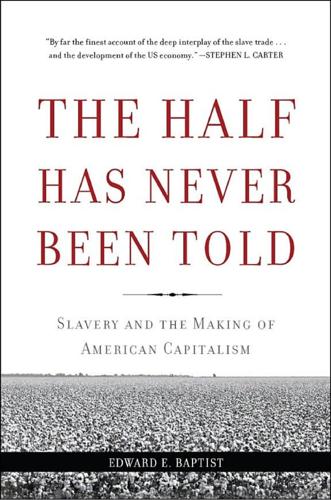
The Half Has Never Been Told: Slavery and the Making of American Capitalism
by
Edward E. Baptist
Published 24 Oct 2016
Most of the world eventually acquired clothes made in the industrial West from cotton picked in the US South.33 There would be no mechanical cotton picker until the late 1930s. In fact, between 1790 and 1860, there was no mechanical innovation of any kind to speed up the harvesting of cotton. There was nothing like the change from scythe to mechanical reaper, for instance, that by the 1850s began to reshape the Chesapeake wheat fields Ball had left behind. Even slave-operated Louisiana sugar mills were more factory-like than the cotton labor camps were. And the nature of human bodies, the only “machine” that worked in the cotton fields, did not change between 1805 and 1860.

Capitalism and Its Critics: A History: From the Industrial Revolution to AI
by
John Cassidy
Published 12 May 2025
In 1850 Britain’s rail network already extended to six thousand miles, and by 1870 it would nearly triple in size.6 During the same twenty-year period, as iron steamships took over the oceans, the annual output of British shipyards rose from 13,000 tons to more than 250,000 tons.7 British exports of railway machinery, including steam locomotives, rose almost tenfold.8 As Marx scanned old editions of The Economist in the British Museum reading room, the country was preparing to celebrate its status as the “workshop of the world”—a phrase Benjamin Disraeli coined—by hosting a vast expo in London’s Hyde Park, “The Great Exhibition of the Works of Industry of all Nations,” which would have thirteen thousand exhibits. They included James Naysmyth’s steam hammer, Cyrus McCormick’s mechanical reaper, and Goodyear’s vulcanized rubber. Although it wasn’t technically an exhibit, the event also featured the world’s first public pay toilet. Continental Europe was still well behind Britain in industrializing, but it was moving in the same direction. In the United States, capitalist enterprise was rapidly spreading across the continent.
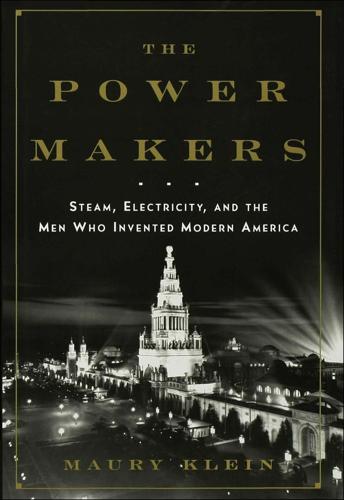
The Power Makers
by
Maury Klein
Published 26 May 2008
With a steam-powered gin three men could clean anywhere from 1,000 to 4,500 pounds a day. The 1838 survey noted that slaves operated most of these southern engines.37 As the Midwest began filling up with settlers eager to grow grain on ever larger farms, inventors like Cyrus McCormick and Obed Hussey eased their labors by creating mechanical reapers and mowers. Other inventors devised a variety of threshers, cultivators, drills, harrows, and other machines. All of these labor-saving devices relied on horses, mules, or oxen for power. Threshing machines posed especially difficult problems. To get enough power for efficient threshing, inventors came up with “sweep-power” machines that utilized eight to fourteen horses and a complicated gearing mechanism.
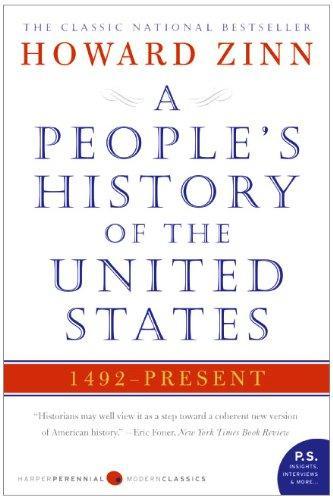
A People's History of the United States
by
Howard Zinn
Published 2 Jan 1977
This was the advance guard of a growing class of white-collar workers and professionals in America who would be wooed enough and paid enough to consider themselves members of the bourgeois class, and to give support to that class in times of crisis. The opening of the West was being helped by mechanization of the farm. Iron plows cut plowing time in half; by the 1850s John Deere Company was turning out ten thousand plows a year. Cyrus McCormick was making a thousand mechanical reapers a year in his factory in Chicago. A man with a sickle could cut half an acre of wheat in a day; with a reaper he could cut 10 acres. Turnpikes, canals, and railroads were bringing more people west, more products east, and it became important to keep that new West, tumultuous and unpredictable, under control.
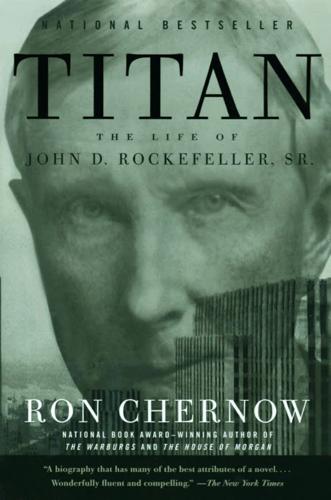
Titan: The Life of John D. Rockefeller, Sr.
by
Ron Chernow
Published 1 Jan 1997
Bessie responded better than Edith, who required an extended follow-up rest in a cottage at Saranac Lake in upstate New York. In November 1895, hard on the heels of her recovery, Edith married Harold McCormick of Chicago, who had just graduated from Princeton. He was the son of Cyrus McCormick, the developer of the mechanical reaper and founder of what became International Harvester. Junior had befriended Harold at the Browning School and was the inadvertent matchmaker. During the World’s Columbian Exposition in 1893, he, Cettie, and his three sisters traveled west to Chicago by private railroad car and stayed with Nettie Fowler McCormick, Cyrus’s indomitable widow, at her Rush Street mansion.